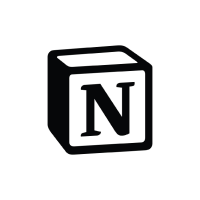Gaida.ai
Gaida.ai (now Enoti.bg) is a Bulgarian startup in the real estate space. Their app uses AI and machine learning to improve property search and show buyers properties they may have not considered by expanding on their search parameters. The app integrates with a dashboard for real estate agents.
Context
Brief
The team at Gaida had developed an AI black box and was moving into product definition. Their ambition was to create a consumer app that would generate leads and feed them into a lead management platform.
Core Team
Yael Olivo - Product designer
Lubomir Varbanov - Lead Software Engineer
Galia Jordanova - CEO
Nik Jordanov - Product manager
Challenges
Defining the MVP for the consumer app
I conducted user interviews with people who had bought a house in Bulgaria in the previous 5 years; I then summarised my findings into an experience map and presented them to the product team.
Experience map - buyer
I ran a prioritisation workshops to define which problems we would focus on for the first release, and which would be deferred to later ones. With that in mind, we brainstormed a series of features and placed them in a cost/impact matrix to define the MVP.
Pre-pandemic remote project
The product team was based in Bulgaria, while at the time I was living in Portugal. I conducted all workshops and user interviews using Google Meet combined with Miro (virtual whiteboard) and used lookback.io to record user interviews. This not only allowed me to complete the whole project remotely but improved and sped up documentation.
Guerrilla prototype testing
I created a first mid-fidelity prototype based on the outcome of the previous workshop. However, there was no budget set aside for user testing, so I decided to offer a free day at a co-working space in exchange for one hour of usability testing. This allowed me to rapidly remove some obvious oversights in the user flows and move on to higher fidelity in a short amount of time.
App - mid-fidelity prototype
Portal - mid-fidelity prototype
Understanding users vs customer
The core feature that the product team had envisioned for the real estate portal was an AI-powered auto-recommendation feature. However, from our interview we understood that what differentiates a successful estate agent from a mediocre one is the ability to match buyers to properties. If an AI could help their clients find a match better than they can, it was unlikely to hold much appeal.
For the MVP, we decided to create a monitoring tool, which focused on reporting and showing how an agency's performance can improve over time thanks to AI. While our user remained the real estate agent, our customer became the agency owner or the resource manager.
Portal dashboard
Methods & tools
Skills / Methodologies
User interviews
Stakeholder interviews
Experience mapping
Prioritisation matrix
UI design
Rapid prototyping
User testing
Tools
Sketch
Invision
Zeplin
Miro
Lookback
Outcomes
Delivered discovery report, high-fidelity prototype and icon set for two digital MVPs in 4 weeks
Some screens of Gaida.ai consumer app
Gaida.ai Estate Agent Portal dashboard - buyer leads
Learnings
Often, the fastest way to make a decision on a user interface is to visualise it. One of the developers proposed a series on features for the portal dashboard, but even a low-fidelity mockup showed it would be far too complicated for a non-technical user.
Understanding the existing digital ecosystem can help save time and prevent user frustration. For example, most estate agents already log all their activity in another software, and that log can be exported as plain text. Rather than creating a new input system for them, we focussed on visualising the raw data that was already available.
Zooming out can help find alternative solutions. A cost/impact matrix can help prioritise features, some features, however, may seem unavoidable. For example, new leads would come from the app use, but a list of existing leads had to be imported or created into the portal. We evaluated creating a feature to import a database, but the engineering team cost estimation was too high. We decided it made more sense to import existing leads manually as part of customer service, and only when the product scaled up it would need a dedicated feature for it.









